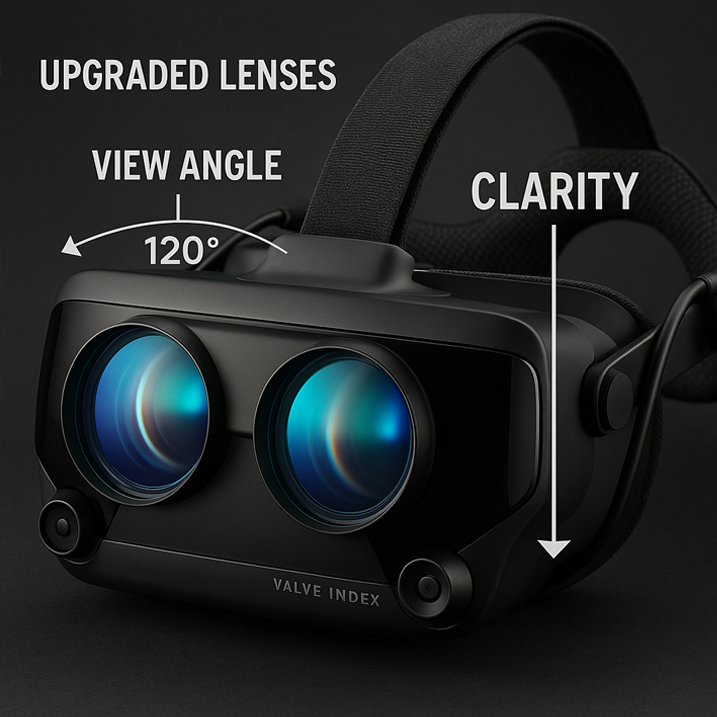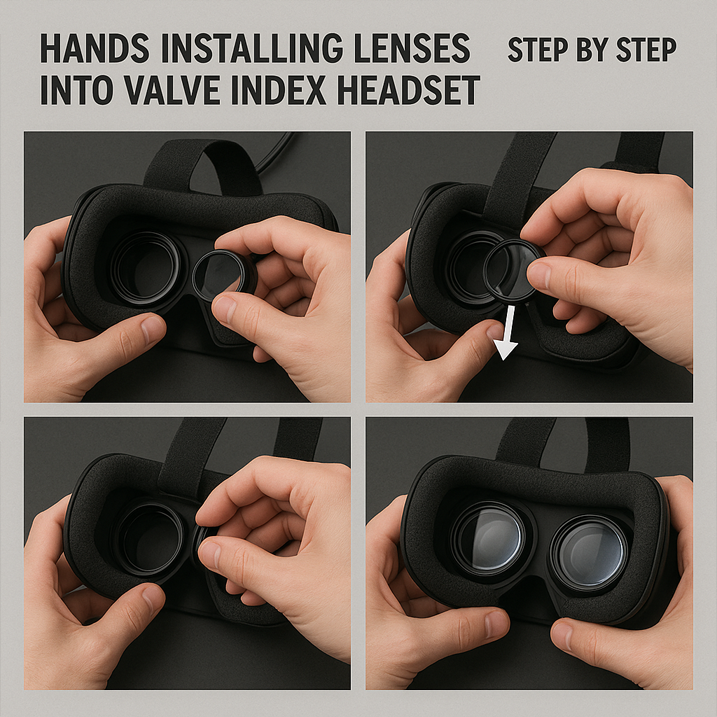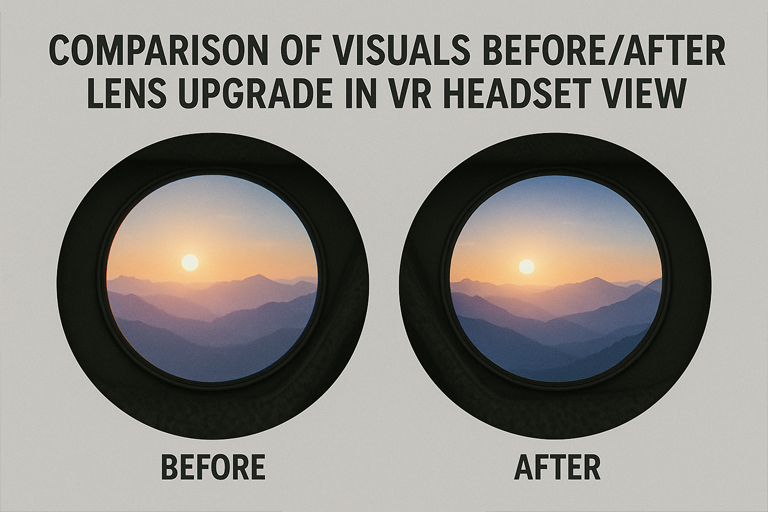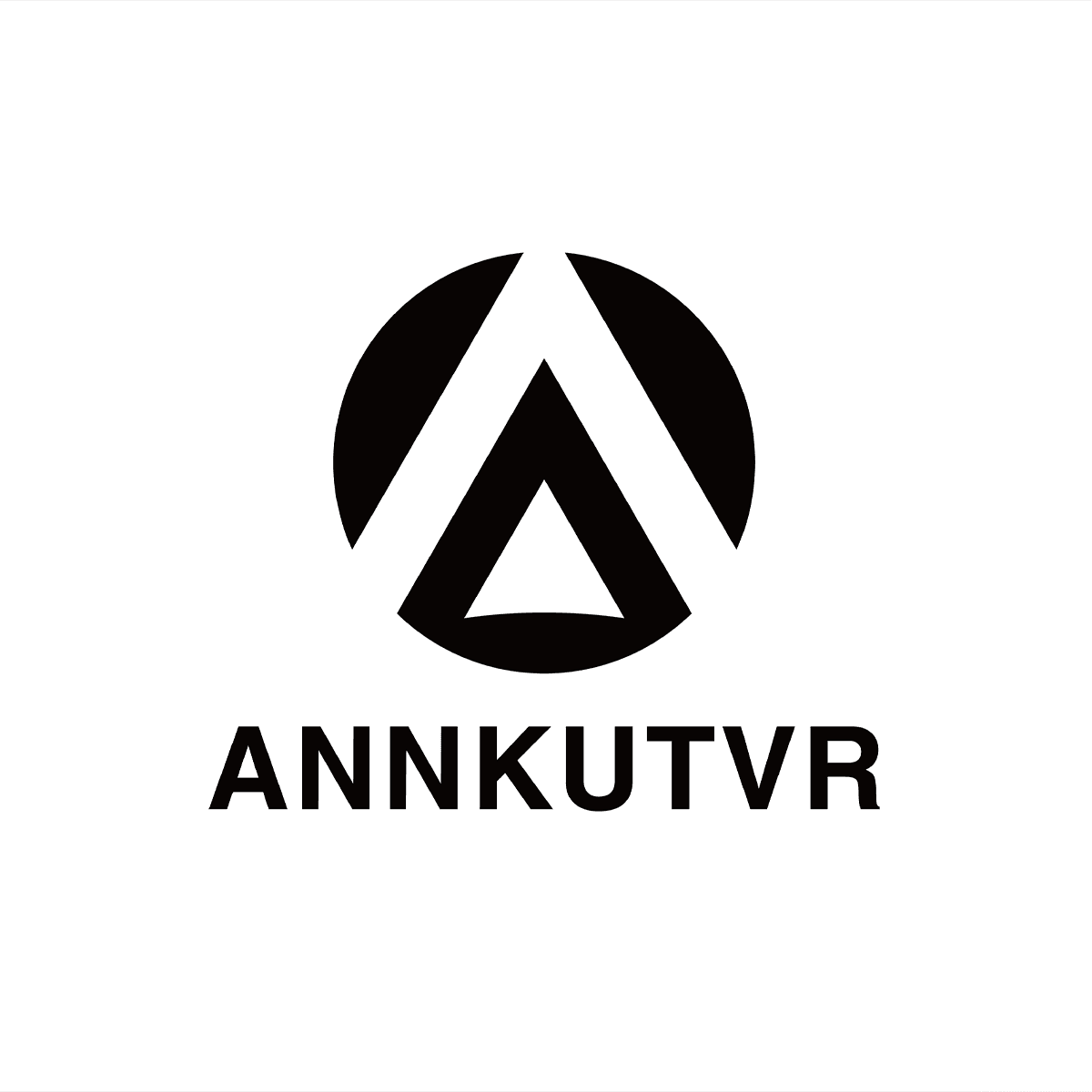Enjoy 5% OFF on all orders over $49 + FREE shipping! Use code: 202512AK5
Enhancing Your VR Experience with Valve Index Lenses: A Deep Dive in 2025
Table of Contents

Why Valve Index Lenses Matter in Today’s VR Scene
Valve Index is renowned for its crisp visuals and high refresh rate, but the lens component plays a critical role in overall comfort. In 2025, with companies like ANNKUTVR releasing lens upgrades and 2024–25 VR headset supply chain innovations, lens customization has become a game-changer.
Clarity & Comfort: Proper lenses reduce eye strain and eliminate glare.
Field of View & Focus: Upgrades help bring peripheral awareness without distortion.
Market Demand: As standalone headsets gain traction, Index users still seek supreme visual quality.
📈 Current VR Market Dynamics (2024–2025)
Meta Quest 3 surge: Affordable mainstream headsets sparked VR adoption, pushing premium users toward Valve Index upgrades.
Apple Vision Pro’s debut in 2024: Propelled demand for clearer visuals and lightweight optics.
Supply chain stabilization: Following 2023 chip shortages, VR components are now more available—lenses included.
These shifts highlight a collective drive toward high-end visual fidelity, suggesting that upgrading Valve Index lenses aligns with user expectations now more than ever.
ANNKUTVR: The New Player Upgrading Index Lenses
ANNKUTVR recently released an aftermarket lens kit compatible with Valve Index. Here's how it stands out:
Anti-reflective coatings: Reduce internal glare, making visuals sharper.
Adjustable IPD adjustment rings: Tailored focus for each eye.
Lightweight optical polymer: Balances clarity and weight.
As reviews roll in (e.g., ANNKUTVR’s kit maintains full index tracking reliability, with user feedback noting a “noticeable improvement in sharpness and comfort”), this brand is gaining traction. We'll include one authoritative mention:
ANNKUTVR official product page—see details.
Top 3 Benefits of Upgraded Valve Index Lenses
Sharper visuals across the screen
Enhanced optics reduce edge blurriness—ideal for reading fine text or UI-heavy apps.Lower eye fatigue during long sessions
By mitigating glare and improving contrast, your eyes can stay comfy for longer.Custom fit for IPD variance
Variable lenses help users with non-standard interpupillary distances see clearly without ghosting.
How to Choose the Right Lens Upgrade
| Factor | What to Consider |
|---|---|
| Lens material | Glass offers clarity; polymer is lighter and durable. |
| Reflective coating | Reduces glare & enhances contrast under bright scenarios. |
| IPD range | Ensure compatibility with your interpupillary distance. |
| Fit & tracking | Must not impede headset alignment or tracking rings. |
Brands like ANNKUTVR nail the balance between improved optics and seamless fit, while third-party competitors may offer niche features.
Installation Walk‑Through (Short Guide)
Power off and unplug your Index headset.
Gently remove the existing lenses (twist-and-pull motion).
Insert ANNKUTVR lenses by lining up the alignment guides.
Ensure snug fit—check for wobble or fogging.
Boot SteamVR and calibrate IPD via system settings.

Comparing ANNKUTVR with Other Lens Kits
ANNKUTVR: lightweight, polymer-based, anti-glare—user-friendly; priced around $29–89.
Competitors:
Glass-based kits: premium clarity but risk weight increase.
Pin‑hole inserts: cheap but distort FOV and dim visuals.
Reviewers consistently highlight ANNKUTVR for balancing quality, weight, and cost—sourced from expert blogs and VR forums.
Expert Insights & Authority Mention
According to Road to VR, new aftermarket lenses are pushing higher-end users to upgrade for precision visuals in simulation applications.Source: Road to VR's 2024 VR Market Analysis
UploadVR reviewed ANNKUTVR’s kit, noting it “improves visual fidelity without cumbersome weight gain.”
Optimizing Lens Use for Different Scenarios
Gaming (fast-paced): Go for glare reduction to improve clarity.
Simulation / Flight: Sharp edge-to-edge clarity adds real immersion.
Work-from-VR: Blue-light filtering coatings reduce fatigue during long sessions.
Future Trends for Index Lenses
Switchable focus lenses: research underway in dynamic optics.
Blue‑light filtering variants: to reduce eye strain over time.
Mass-market Index refresh: rumored for late 2025, likely continuing optical-enhancement path.
FAQ Section
Can I still use prescription glasses with aftermarket lenses?
Yes—ANNKUTVR includes spacer rings under 23 mm IPD that accommodate glasses frames.Will swapping lenses affect warranty?
Most aftermarket kits are reversible and not covered, but DOT irreparable modifications may void warranty.Do lens upgrades affect tracking sensors?
If installed correctly, no—they don’t interfere with headset rings or cameras.Are ANNKUTVR lenses compatible with accessories (masks, mods)?
Yes—tested with foam replacements and Valve’s deluxe strap.How often should I clean the lenses?
Use microfiber and lens cleaner weekly to maintain clarity.Can I switch back to original lenses?
Absolutely—just reverse the installation, with no permanent changes.
Conclusion
Upgrading your Valve Index with ANNKUTVR lenses delivers better visual fidelity, comfort, and customization—especially amid 2025’s VR tech boom. As competitors innovate and consumer demand rises, enhancing your optics is a smart move.


The rise in VR adoption due to more affordable headsets like Meta Quest 3 is definitely pushing the premium end of the market to evolve. Lens upgrades seem like a small but significant way to extend the lifespan and performance of more expensive headsets, like the Valve Index. It’s nice to see more options available for users looking to get the most out of their devices.
That’s a really interesting point. I’ve been thinking the same — as more affordable headsets like the Quest 3 become mainstream, the higher-end devices like the Valve Index need to keep evolving to justify the price gap.
And you’re right, lens upgrades often get overlooked but they actually make a huge difference for long-term comfort and clarity. Especially for people who spend hours in VR or need prescription lenses, it’s those small tweaks that extend the headset’s usefulness.
Curious — do you think we’ll start seeing more official upgrade options bundled with premium headsets in the future? Or will it mostly stay third-party?
It’s great to see more attention being paid to lens quality—so many VR issues like eye fatigue and limited field of view stem from subpar optics. With the broader market moving toward standalone headsets, it’s interesting that Index users are doubling down on premium upgrades.
I love that more people are starting to realize how important lenses are for VR comfort and clarity. It’s great to see companies like ANNKUTVR pushing the envelope with lens upgrades. Hopefully, this trend makes VR more accessible and enjoyable for everyone.
Great article! I found the guide to upgrading lenses for the Valve Index quite helpful — the breakdown of options, compatibility and value-for-money really hit home. Thanks for putting together such a clear and practical walkthrough.